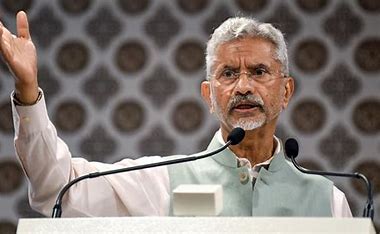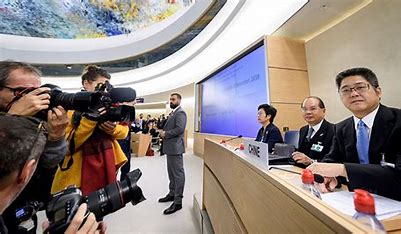
On 1 February, the Finance Minister presented the first Budget of the decade and for the first time in a digital format, doing away with the age-old tradition of the bahi-khata. With this Budget, the government seems fully prepared to support and facilitate the economy’s reset and provide every opportunity for our economy to raise and capture the pace that it needs for sustainable growth.
The Budget proposals for 2021-22 are dependent on six pillars: (i) health and wellbeing, (ii) physical and financial capital, and infrastructure, (iii) inclusive development for aspirational India, (iv) reinvigorating human capital, (v) innovation and R&D, and (vi) minimum government and maximum governance.
HEALTH
Taking a holistic approach to health, the Budget has drawn focus on strengthening three areas: preventive, curative, and wellbeing. A new centrally sponsored scheme, the PM Aatmanirbhar Swasth Bharat Yojana, has been proposed to be launched. This will develop the capacities of primary, secondary, and tertiary care systems, strengthen existing national institutions, and create new institutions, to cater to the detection and cure of new and emerging diseases. This will be in addition to the National Health Mission.
INFRASTRUCTURE DEVELOPMENT
Budget 2021-22 reflects the firm commitment of the government to boost economic growth by investing in infrastructure development. The National Infrastructure Pipeline (NIP), which was announced in December 2019, is a first-of-its-kind, whole-of-government exercise undertaken by the Government of India. The NIP is a specific target which this government is committed to achieving over the coming years. It will require a major hike in funding, from the government and the financial sector.
FINANCIAL CAPITAL
One of the many well thought proposals has been to consolidate the provisions of the SEBI Act, 1992, Depositories Act, 1996, Securities Contracts (Regulation) Act, 1956 and Government Securities Act, 2007 into a rationalised single Securities Markets Code. To instil confidence amongst the participants in the corporate bond market during times of stress and to generally enhance secondary market liquidity, the Budget has proposed to create a permanent institutional framework. The proposed body would purchase investment grade debt securities both in stressed and normal times and help in the development of the bond market.
The Budget has proposed to amend the Insurance Act, 1938 to increase the permissible FDI limit from 49% to 74% in insurance companies and allow foreign ownership and control with safeguards. Under the new structure, the majority of directors on the board and key management persons would be resident Indians, with at least 50% of directors being independent directors, and a specified percentage of profits being retained as general reserve.
As a further measure which directly benefits start-ups and innovators, the Budget has proposed to incentivize the incorporation of one person companies (OPCs) by allowing them to grow without any restrictions on paid up capital and turnover, allowing their conversion into any other type of company at any time, reducing the residency limit for an Indian citizen to set up an OPC from 182 days to 120 days, and also allowing Non-Resident Indians (NRIs) to incorporate OPCs in India.
To ensure the faster resolution of cases, the NCLT framework will also be strengthened, the e-courts system shall be implemented and alternate methods of debt resolution and a special framework for MSMEs shall be introduced.
REINVIGORATING HUMAN CAPITAL
The National Education Policy (NEP) announced recently has been received well. The government has proposed to amend the Apprenticeship Act with a view to further enhance apprenticeship opportunities for the youth. An initiative is underway, in partnership with the UAE, to benchmark skill qualifications, assessment and certification, accompanied by the deployment of a certified workforce. There is also a collaborative Training Inter Training Programme (TITP) between India and Japan to facilitate the transfer of Japanese industrial and vocational skills, techniques and knowledge.
INNOVATION AND R&D
In the 2019 Budget, the government had announced the National Research Foundation, which will ensure that the overall research ecosystem of the country is strengthened with a focus on identified national-priority thrust areas. A new initiative—National Language Translation Mission—will enable the wealth of governance and policy-related knowledge on the Internet to be made available in major Indian languages.
MINIMUM GOVT, MAXIMUM GOVERNANCE
To support the ease of doing business for those who deal with the government and carry out contracts, the Budget has proposed to set up a conciliation mechanism and mandate its use for quick resolution of contractual disputes. This will instil confidence among private investors and contractors. The Budget has also proposed to take measures to rationalise the functioning of tribunals.
DIRECT TAX PROPOSALS
There are many proposals inserted to simplify the tax administration, ease compliance and reduce litigation. The creation of a Board for Advance Rulings and a dispute resolution committee for small taxpayers will pave the way for further tax certainty.
However, one proposal which has attracted a lot of eyeballs is the proposal to make the Income Tax Appellate Tribunal faceless. A National Faceless Income Tax Appellate Tribunal Centre will be established to communicate between the Tribunal and the appellant electronically. Further, where a personal hearing is needed, it shall be done through video-conferencing. Firstly, it has raised concerns as to whether the Legislature can interfere with the functioning of the Tribunal which has been the ‘final fact-finding authority’ as held by the Supreme Court in plethora of its decisions. Next, it is feared by tax practitioners that the High Court shall be burdened with an enormous amount of litigation as the power of make representation has been clipped by the Budget proposal. In other words, the provision (Section 288 of the Income Tax Act, 1961) on authorised representatives seems to have become redundant. Therefore, the government should take a relook and withdraw the proposal. .
INDIRECT TAX PROPOSALS
On the issue of custom duty policy, the Budget has proposed the twin objectives of promoting domestic manufacturing and helping India get on the global value chain and export better. The thrust now has to be on easy access to raw materials and exports of value-added products. In this regard, the Budget has proposed to review 400 old exemptions in the custom duty structure, and from 1st October, 2021, a revised custom duty structure free of distortions will be put in place. Any new custom duty exemptions henceforth will have validity up to the date of 31 March following two years from the date of its issue.
CONCLUSION
Overall, this is a reassuring Budget with no adverse shocks, which has lifted the overall sentiment of the country. Covid-19 is an unprecedented time and has shown the importance of healthcare in India. Healthcare and wellbeing have received top priority in this Budget too. Other positives include higher spending on infrastructure, a push for bank privatisation, increased funding for strengthening the public sector R&D and innovation ecosystem as well as increasing the FDI cap in insurance.
The writer is a senior advocate.















